Path count 101
First, we solve a simpler problem:
Find the number of paths on the Cartesian plane from (0, 0) to (n, n) with:
- move up, i.e. from (i, j) to (i, j + 1);
- move to the right, i.e. from (i, j) to (i + 1, j);
and we can go to grid which x < y.
How to solve it? Too Hard? Okay, we try to find the number of paths from (0, 0) to (2, 2) first. We could draw all paths in a grid:

We define
f(x,y) => the number of paths from (0, 0) to (x, y)
You can see the path to (2, 2) from either (1, 2) or (1, 2), so we can get:
f(2, 2) = f(2, 1) + f(1, 2)
And then you will notice for point(x, y), its path from either (x, y - 1) or (x - 1, y). That's very natural, since we have only two possible moves:
- move up, i.e. from (i, j) to (i, j + 1);
- move to the right, i.e. from (i, j) to (i + 1, j);
I draw a larger illustration for you, and you can check our conclusion:

So we can get that:
f(x, y) = f(x, y - 1) + f(x - 1, y)
Wait... What if x = 0 or y = 0? That's quite direct:
if x = 0 => f(x, y) = f(x, y - 1)
if y = 0 => f(x, y) = f(x - 1, y)
The last... How about f(0, 0)? We define:
f(0, 0) = 1
since there just 1 path from (0,0) to (1,0) and (0, 1).
OK, summarise:
f(x, y) = f(x, y - 1) + f(x - 1, y)
if x = 0 => f(x, y) = f(x, y - 1)
if y = 0 => f(x, y) = f(x - 1, y)
f(0, 0) = 1
And by recursion, we can solve that problem.
Your problem
Now let's discuss your original problem, just modify our equations a little bit:
f(x, y) = f(x, y - 1) + f(x - 1, y) + f(x - 1, y - 1)
if x = 0 => f(x, y) = f(x, y - 1)
if y = 0 => f(x, y) = f(x - 1, y)
if x < y => f(x, y) = 0
f(0, 0) = 1
and it will result my code.
The last thing I add to my code is Memoization. In short, Memoization can eliminate the repeat calculation -- if we have calculated f(x,y) already, just store it in a dictionary and never calculate it again. You can read the wiki page for a further learning.
So, that's all of my code. If you still get some questions, you can leave a comment here, and I will reply it as soon as possible.
Code:
d = {} # Memoization
def find(x, y):
if x == 0 and y == 0:
return 1
if x < y:
return 0
if d.get((x, y)) is not None:
return d.get((x, y))
ret = 0
if x > 0:
ret += find(x - 1, y)
if y > 0:
ret += find(x, y - 1)
if x > 0 and y > 0:
ret += find(x - 1, y - 1)
d[(x, y)] = ret
return ret
print find(2, 1) # 4

